I have had the opportunity to play a major role in the design of the Dunedin Fine Art Center’s facilities since its beginnings in the mid ‘70’s and through several major expansions and renovations. The center has a history of dedicated studio spaces with customized equipment and engineering for a variety of art media: drawing, painting, printmaking, photography, jewelry, ceramics, fiber arts and much more. These programs have all grown out of smaller, grass roots programs. Some successful classes that have been offered, such as creative writing, have strayed outside of the strict definition of visual arts. The idea for a Food Arts program at the Dunedin Fine Art Center was new and required careful research and study to prove its viability.
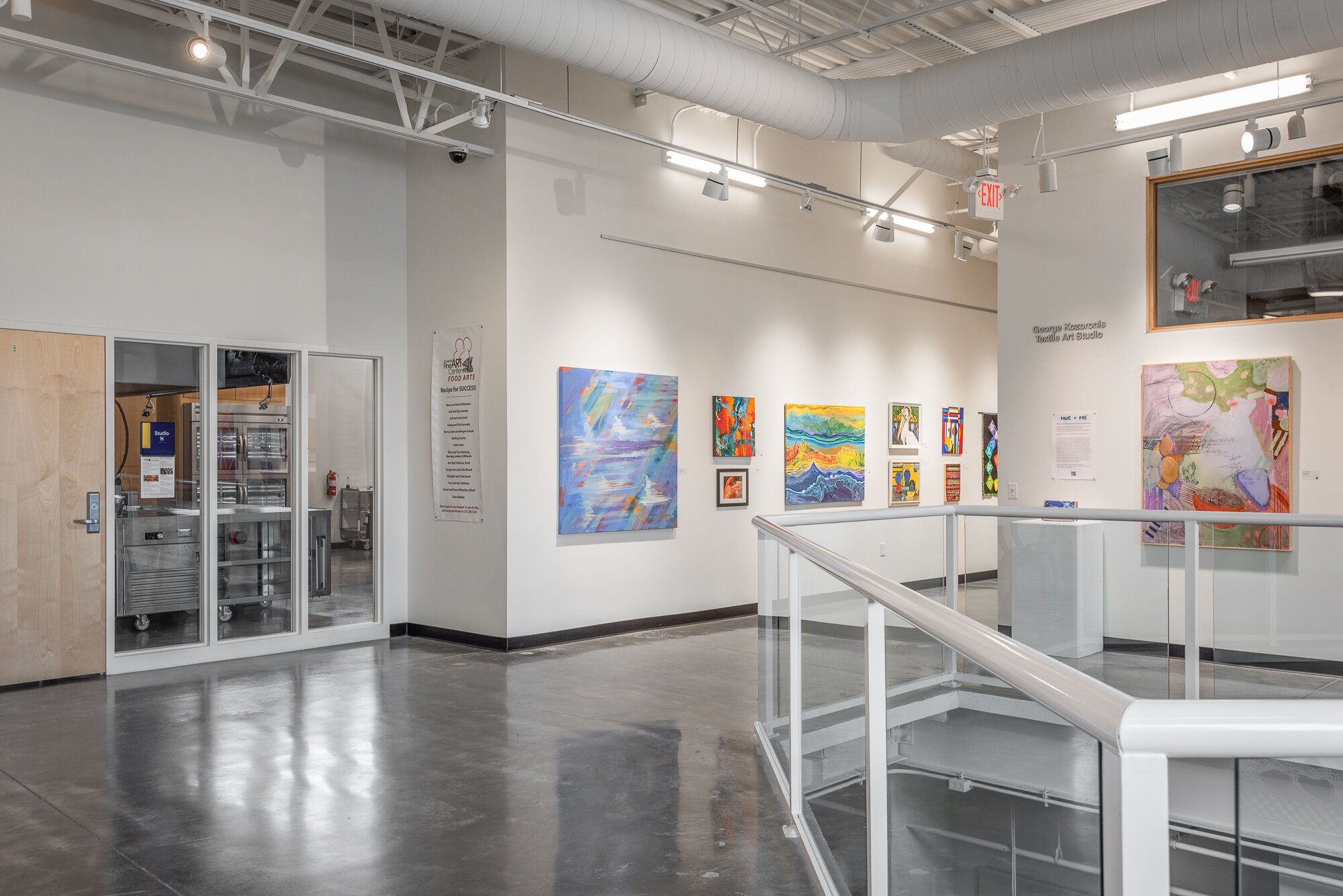
“The Strategic Plan called for non-traditional arts programming to attract new students and revenue,” said Ken Hannon, Vice President and COO. “There was concern that ‘food as art’ wasn’t part of our mission. There were also those who thought it was the next great step for the organization, given the ongoing popularity of cooking online and on television. The University of Tampa reached out to us with their program for helping non-profits to develop programming, add revenues and develop a business plan.”

Hannon’s thesis project with the University of Tampa (from which he earned a Certificate in Non-Profit Management) was a marketing study to measure the potential of a culinary arts program at the Dunedin Fine Art Center, an idea in which some DFAC members had expressed enthusiasm and offered support. Marketing research was required to assure the program was a fit. The results confirmed its viability and several supporters stepped forward to help fund the construction and outfitting of the studio, part of the build-out of the second floor of the west end of the art center.
We realized that we were not experts in the planning of a first-class culinary teaching facility and program, so we enlisted the help of Ted Barber of Theodore Barber & Company in Clearwater. The company has consulted and designed on an international level for restaurants, bars and commercial kitchens for hotels, resorts, convention centers, sports facilities, casinos and more. Additionally, the construction of a utility-intense studio in a continuously occupied building, with daytime and evening classes, presented serious challenges.
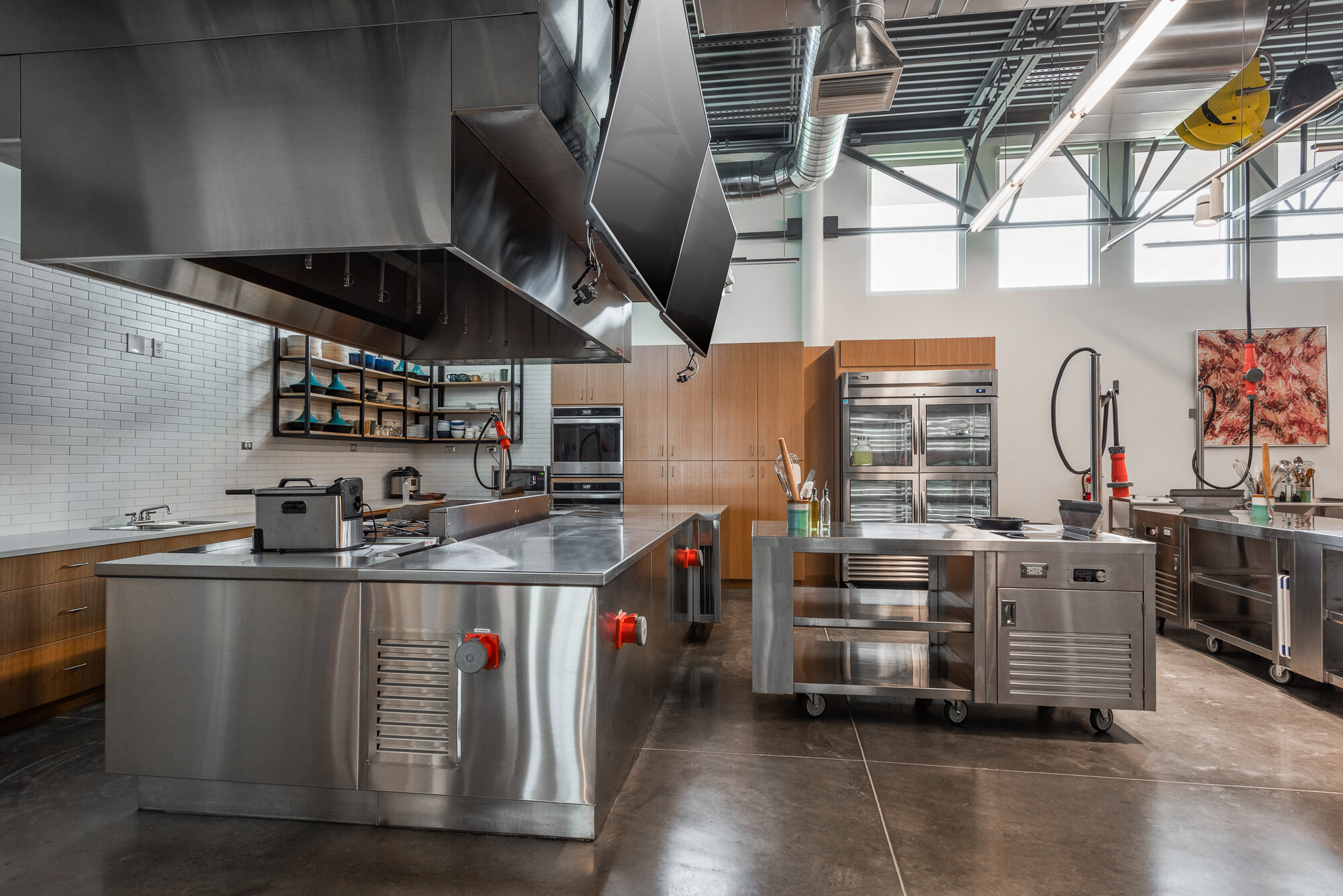
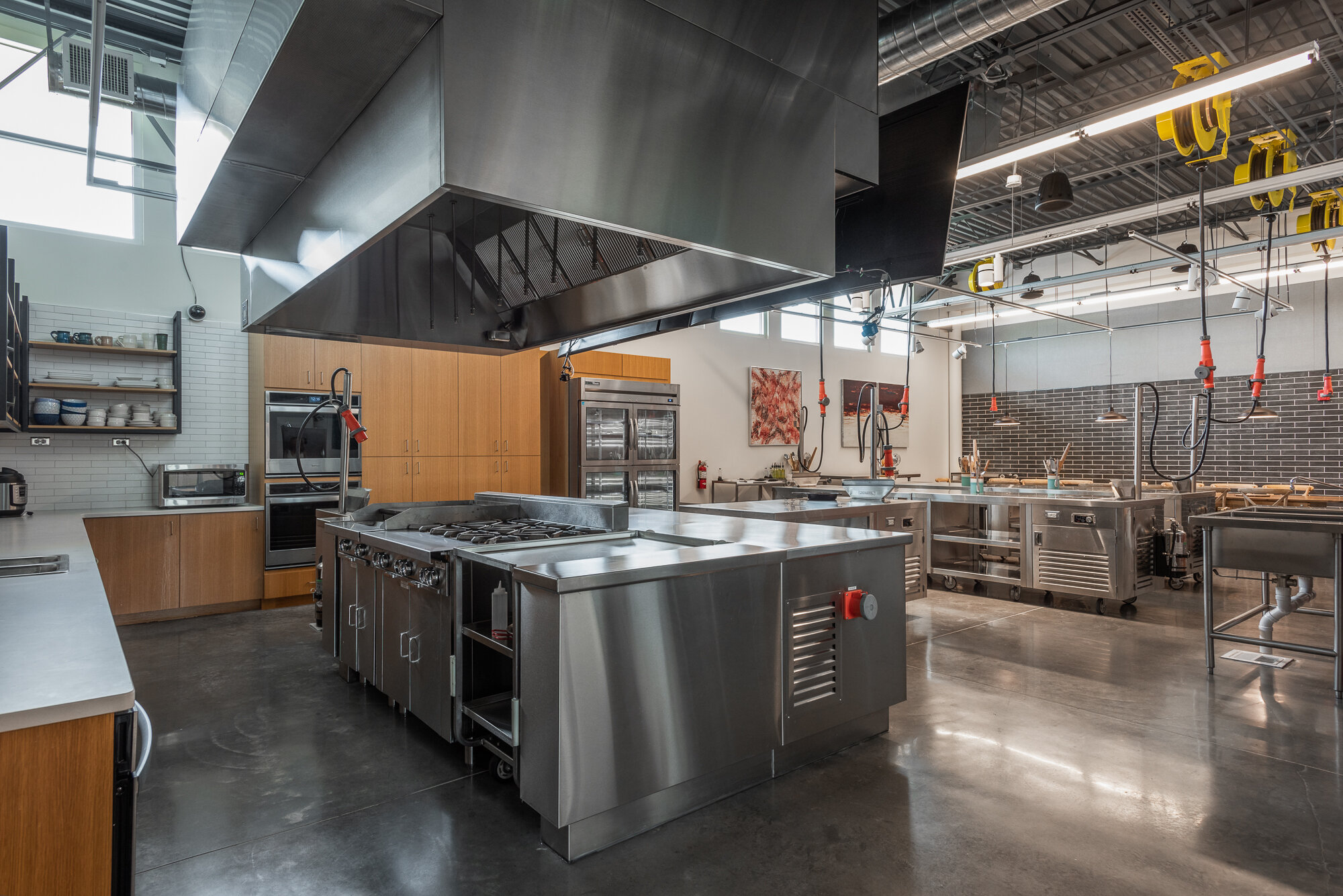
We learned that new electric service to the building was required to handle the demands of the cooking and washing equipment planned. The studio on the first floor below the food arts studio had to be abandoned during the construction process to provide access to power lines, gas lines, and water and waste piping within the first-floor overhead space. This presented programming challenges and noise concerns for the other studio activities. Fortunately, when the building was built in 2015, the Food Arts Committee already had a vision. The studio size was pre-determined in advance so that no walls had to be moved, saving time and money, and reducing noise and mess. The work was mostly confined to the two affected studio areas.
The studio includes a chef’s station with commercial range and oven, overhead cameras and two 80” monitors for demonstrations and video production. The most unique feature of the facility is the six mobile workstations for students that move on castors, powered with 220-volt overhead cords and reels. The custom-built units each include an electric range top, large preparation surface, storage space and a built-in exhaust system that takes the place of an overhead hood. Household convection ovens also keep learning within the reach of home cooking. Program and facility comply with all Health Department standards.
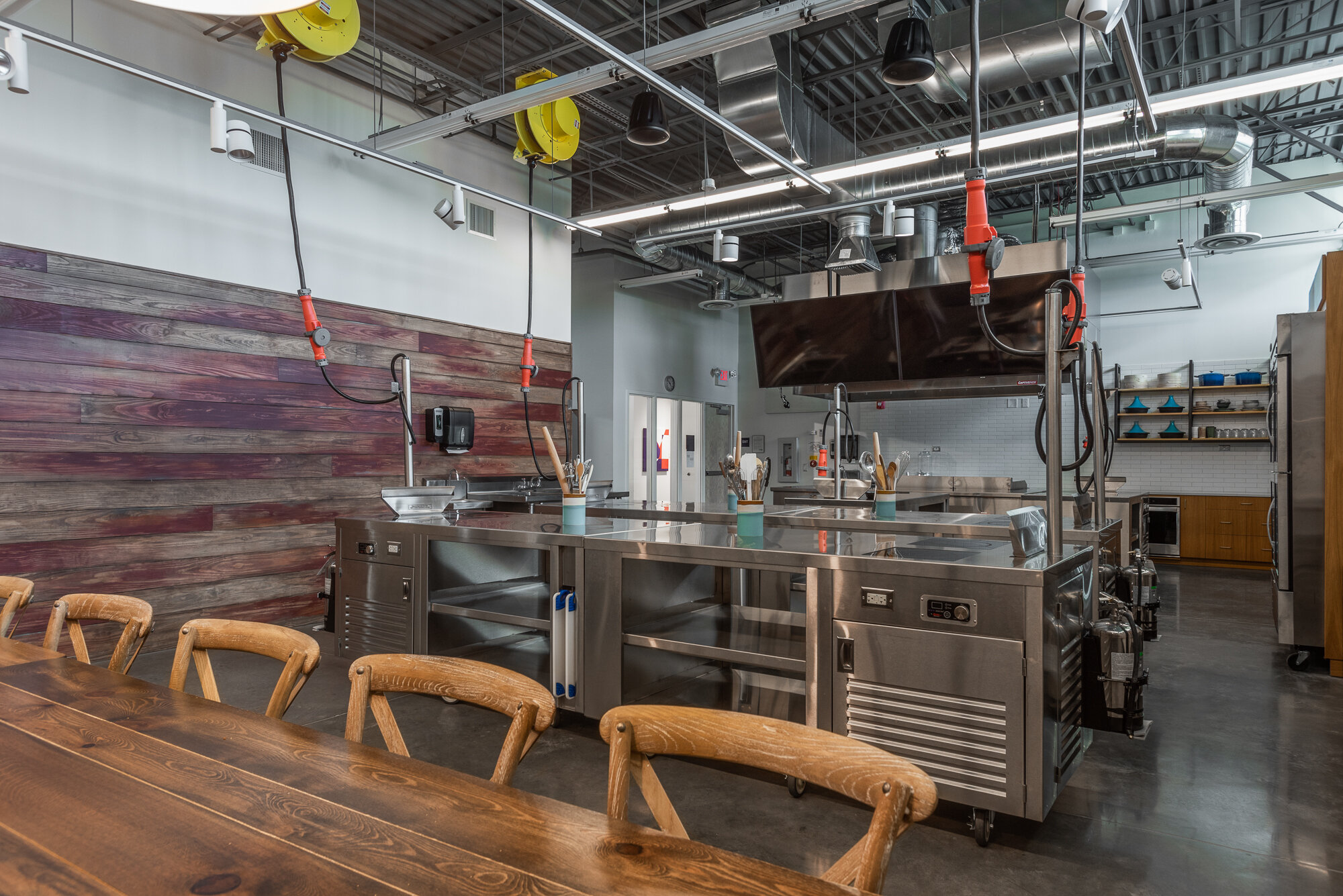
Basic build-out was $400,000 and equipment was $130,000, all paid for by donors. This investment needed an ambitious and well-planned program to provide classes that would attract those new students to the center, stimulate partnerships in the community and create opportunities for the center’s current programs to share new ideas.
“The Food Arts program has great potential to build partnerships on a variety of levels,” said Hannon. “It fits in so many ways with what we are currently doing. DFAC’s Sterling Society has successfully conducted numerous art travel tours and we believe travel trips featuring food have great potential. The studio’s serving dishes, bowls and cups were made by our students in our ceramics program. Our fiber arts program can potentially provide creative textiles for use in dining and cooking. Our offsite knife forging program can make creative tools for cooking and dining. Food is the oldest still life subject in the world! Photography featuring the visual appeal of food presentation can link to our photography program in creating imagery for exhibitions.”
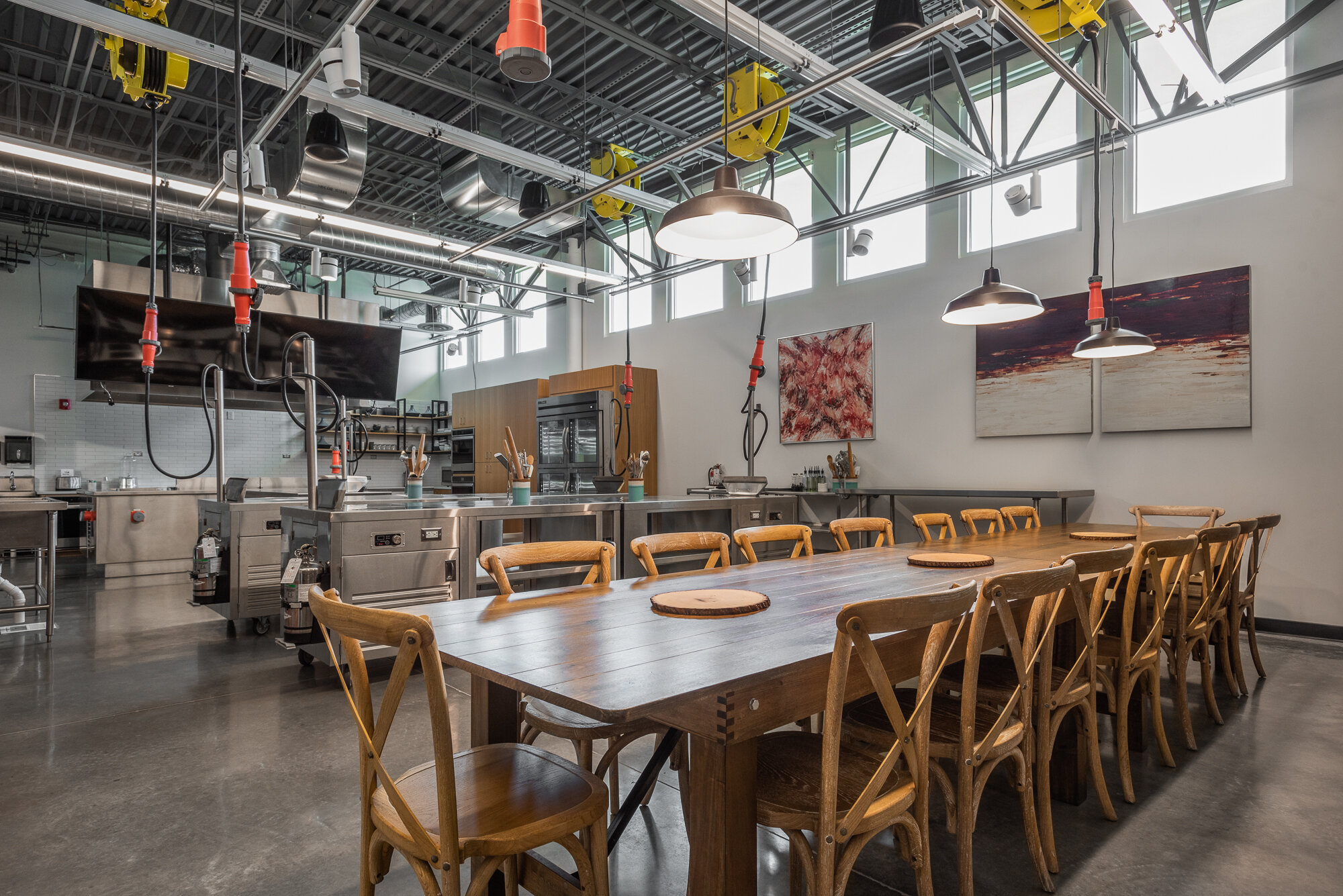
According to Hannon, Chip Wiener, food photographer and critic for Creative Loafing, will be offering Chip’s Tips, a series of short ideas about improving food photography. The tips might come in the form of print cards and videos. Another offsite outreach opportunity is to partner with the non-profit Dunedin Community Garden, where students can learn how to select fresh organic produce for the kitchen. Such community partnerships can lead to mutual benefits for everyone involved. Restaurant chefs are critical to the mix.
“Chefs Cricket and Jason Borajkiewicz from The Restorative, an award-winning Dunedin restaurant, offered a recent class at the Food Arts studio in Sous Vide (cooking meat sealed in bags in boiling water before searing). This provided an opportunity for people who are interested in great food to gather. Those people get new cooking ideas and an introduction to the restaurant and the chefs. It’s a win-win for everyone,” said Hannon. The Restorative was named Creative Loafing’s Critic’s Choice Best of the Bay (BOTB) 2017 Best Chefs; Critic’s Choice BOTB 2017 Best New Restaurant; Critic’s Choice BOTB 2018 Best Restaurant; among other Tampa Bay area awards.
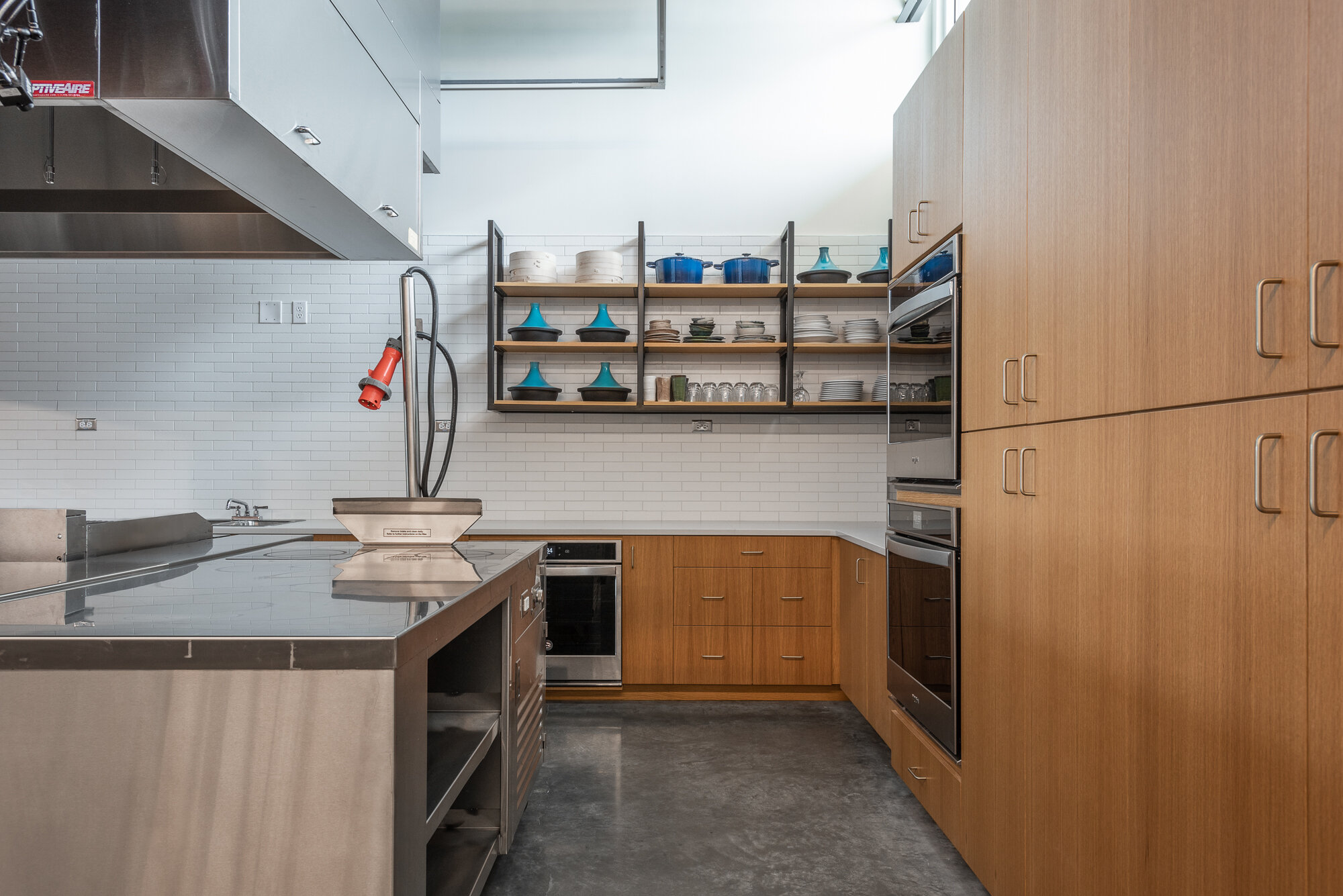
Dedicated studios have elevated the center’s level of teaching. According to Hannon, the well-equipped Jewelry Making studio “…is perhaps the best this side of the Mississippi”. But the Food Art studio is in league with the best culinary teaching facilities anywhere. And for the art center, it offers something different.
“Everyone is comfortable in the kitchen,” said Hannon. “The Food Arts program builds a sense of camaraderie through the shared experience of chefs demonstrating and everyone learning, cooking and sitting down to eat. In the long-standing reputation of the center as a community hub, the kitchen could become the heart of DFAC.”
An extensive schedule of weekly classes can be found on DFAC’s website for creating the food of other cultures and for pot recipes, soups, vegetables, baked goods, creative chicken and much more on a weekly basis. Go to www.dfac.org.
Be the first to comment